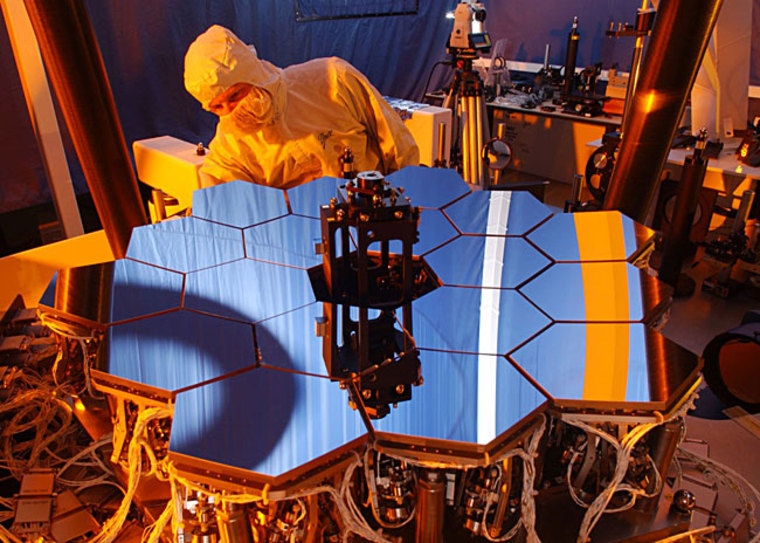Engineers have successfully tested the mirror-controlling "brain" of the James Webb Space Telescope, which is expected to rival imagery taken by the Hubble Space Telescope.
The software, known as Wavefront Sensing and Control (WFSC), will allow the Webb telescope to adjust its 18 hexagonal mirrors.
"It's critical that all 18 mirror segments be aligned in position so that they act as one smooth surface," said Bill Hayden, a systems engineer at NASA's Goddard Space Flight Center (GSFC) in Greenbelt, Md. "This will allow scientists to clearly focus on very dim objects that we can't see now."
JWST is slated for launch in 2013.
With a combined mirror surface of 269 square feet (25 square meters), the Webb telescope will have nearly six times the light-gathering ability of Hubble Telescope, which has one giant 46-square-foot (4.3-square-meter) mirror. Astronomers expect such sensitivity to allow them to see the first stars and galaxies of the universe as well as young planetary systems.
The Webb telescope will launch in a folded-up configuration, later unfurling its lightweight beryllium mirrors in orbit one million miles (1.6 million kilometers) from Earth. Unadjusted, however, the Webb telescope's mirrors would produce blurry images like Hubble did when it first peered into the cosmos.
David L. Taylor, president and chief executive officer of Ball Aerospace & Technologies Corp., said WFSC software that will prevent the problem is based on the same code used to fix the Hubble telescope's imperfections.
"This major technological accomplishment, which built on the legacy of software algorithms used to fix the Hubble Space Telescope and align the Keck telescope," said John Mather, the Webb telescope's senior project scientist at GSFC.
Mini-Webb
To test the WFSC software, engineers created a one-sixth scale model of the Webb telescope model in the laboratory. Once in space, the real 6.2-ton (13,700-pound) telescope will snap a picture of the cosmos, run the software correlating the 18 different light sources (its mirrors) and then correct them using tiny motors.
In the quarterly newsletter issued by the Webb telescope's scientists, Hayden said the testing isn't fully complete, but should go forward without a hitch.
"The tests started in mid-October and will finish by early December," Hayden said, adding that recent results suggest final testing "will be very successful."
Webb telescope scientists presented their mirror-adjusting work on Aug. 26 at the Society for Photo-Optical Instrumentation Engineers meeting in San Diego, Calif.
